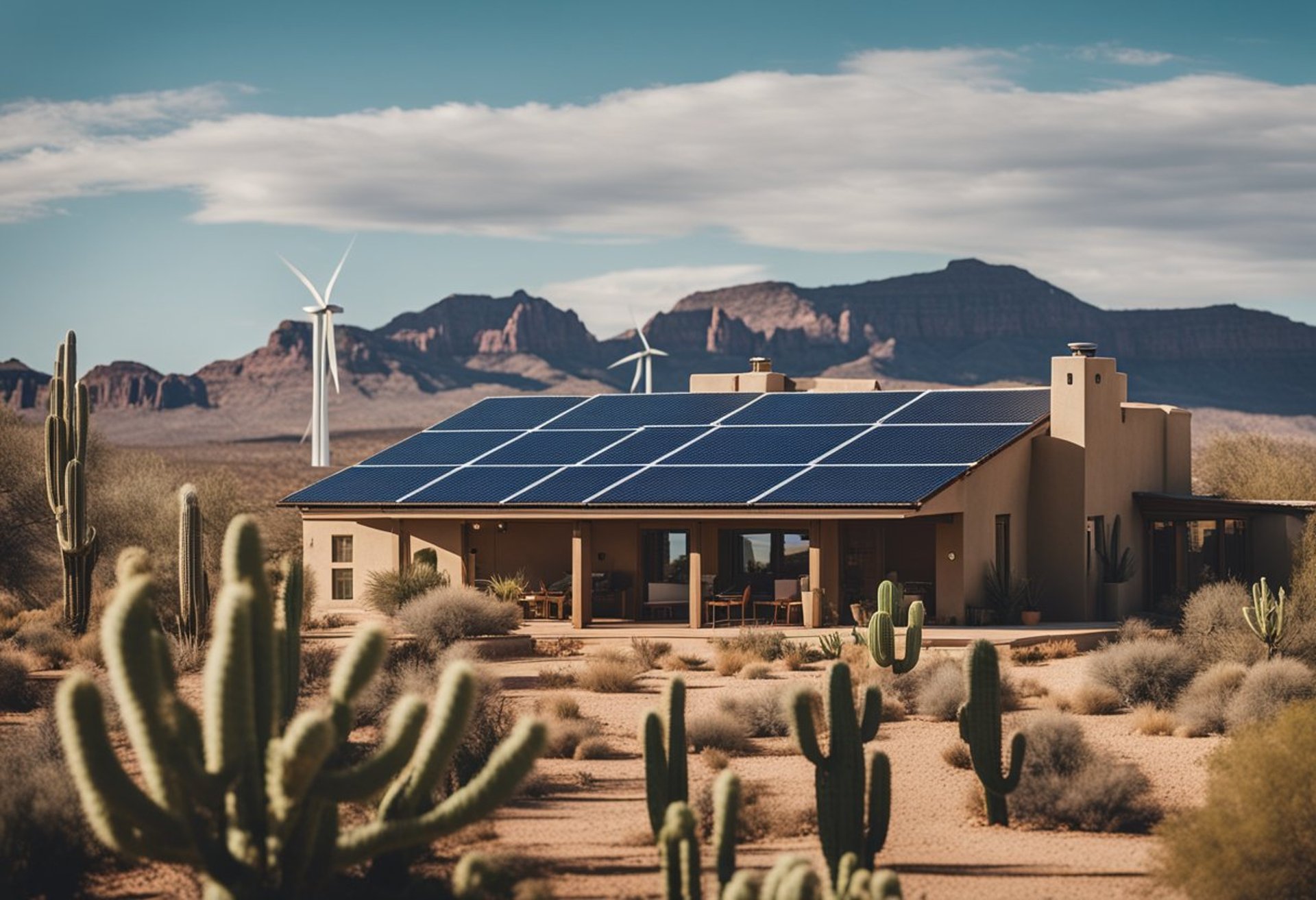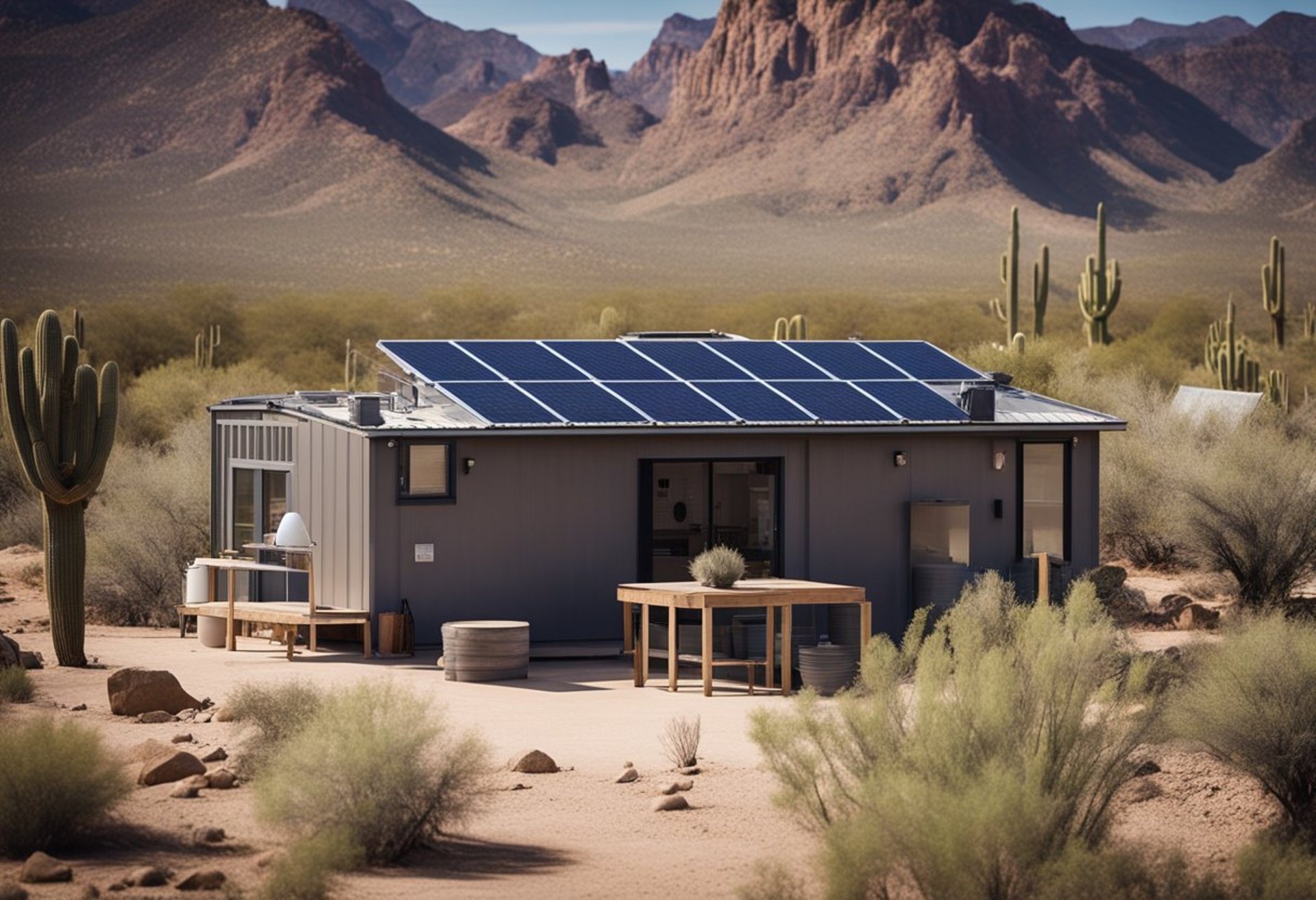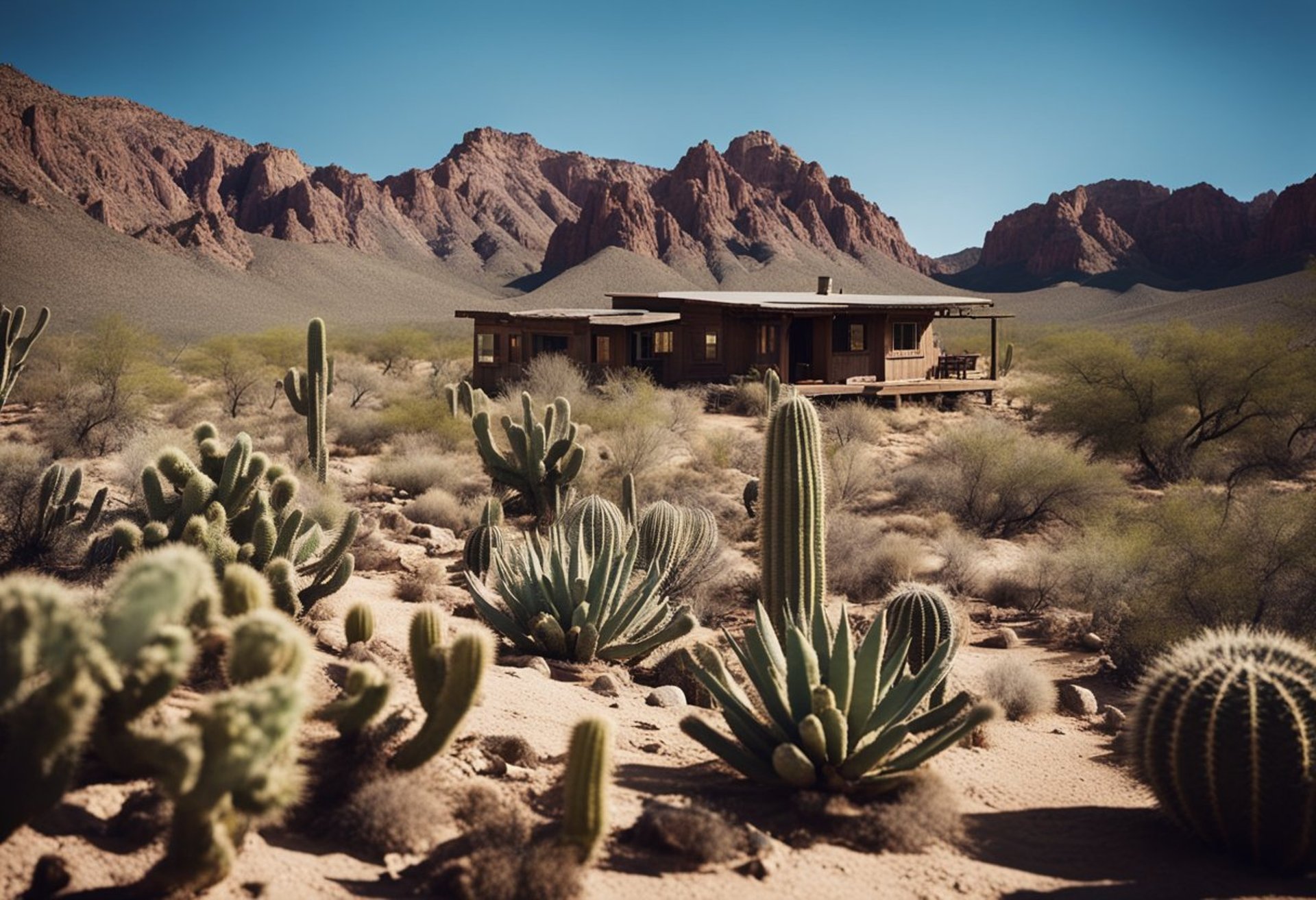Arizona Off Grid Living: Essential Tips for a Sustainable Lifestyle
Arizona off-grid living offers a unique opportunity for those seeking independence and a deeper connection with nature. The state's abundant sunshine and vast landscapes make it ideal for sustainable living, combining self-sufficiency with a rewarding lifestyle. Many individuals and families have found that escaping urban life to embrace an off-grid existence can lead to both financial savings and personal fulfillment.
Living off the grid in Arizona involves strategic planning, from selecting the right land to implementing renewable energy sources. The transition requires knowledge of local regulations and an understanding of sustainable building practices, ensuring that one can thrive in a remote environment. For many, the dream of off-grid living goes hand-in-hand with cultivating a self-reliant lifestyle, where every aspect of daily life is tailored to individual needs and values.
As interest grows in alternative living arrangements, exploring Arizona's off-grid options becomes increasingly appealing. By leveraging the natural resources available in the state, individuals can create a customized living space that fosters independence while also respecting the environment. The journey into off-grid living is not just about survival; it's a lifestyle choice that connects people to the land.
Key Takeaways
Arizona is well-suited for off-grid living due to its climate and landscapes.
Sustainable practices are essential for successful off-grid living.
Embracing self-sufficiency fosters a deeper connection to the environment.
Arizona Off-Grid Living Fundamentals
Living off-grid in Arizona requires understanding the legal, climatic, and resource management aspects unique to the state. Each of these components plays a critical role in establishing a sustainable and efficient lifestyle.
Legal Framework
Arizona has specific regulations that impact off-grid living. Zoning laws vary significantly from county to county, affecting building codes, land use, and permits.
Property Types: Some areas allow residential use on parcels as small as 1 acre, while others might require more.
Building Codes: Those intending to construct must comply with local building codes. These can mandate certain standards for structures, even for off-grid homes.
Water & Septic Permits: Obtaining permits for water wells and septic systems is usually necessary. Each jurisdiction has different requirements that must be fulfilled.
Understanding these elements is essential for compliance and successful off-grid living.
Climate Considerations
The climate in Arizona is primarily arid, impacting off-grid living strategies.
Temperature Variations: Temperatures can range from extreme heat in summer to cold nights in winter. Effective insulation and ventilation are crucial for maintaining comfort.
Solar Energy Potential: The abundant sunshine presents an excellent opportunity for solar power, making solar panels a practical investment.
Seasonal Weather: While rainfall is scarce, monsoon season can bring sudden storms, necessitating robust water collection and drainage systems.
Residents must plan for these climatic realities to ensure a viable off-grid lifestyle.
Water Resource Management
Water management is critical for off-grid living in Arizona, given its limited water resources.
Rainwater Harvesting: Utilizing rainwater collection systems can supplement water needs. Gutters and storage tanks are necessary for this method.
Well Water: For those with permits, drilling a well can provide a reliable water source. Understanding the depth and water quality is vital.
Conservation Practices: Implementing water conservation techniques, like low-flow fixtures and xeriscaping, maximizes water use and sustainability.
Effective water management is key to long-term off-grid living success in this challenging environment.
Finding and Acquiring Land
When considering off-grid living in Arizona, securing the right piece of land is crucial. Location, zoning requirements, and accessibility are key factors to evaluate before making a decision.
Land Research
Conducting thorough land research is essential for identifying suitable properties. Start by exploring various regions in Arizona, each offering distinct benefits and challenges.
Key factors to consider:
Zoning regulations: Ensure the land is zoned for off-grid living and any planned uses.
Access to resources: Proximity to water sources, timber, and arable land is vital.
Climate and environment: Evaluate the climate conditions and any local wildlife considerations.
Utilities: Assess existing infrastructure and potential for solar, wind, or water power.
Online property listings, local real estate agents, and county websites provide valuable information. Visit potential sites to gauge accessibility and assess the surroundings firsthand.
Purchasing Process
The purchasing process for land in Arizona requires careful navigation. After identifying a suitable property, the following steps are essential.
Make an offer: Work with a real estate agent to submit a competitive offer based on comparable properties.
Due diligence: Conduct inspections and review title reports. This ensures there are no hidden issues with the land.
Secure financing: Explore options like conventional loans, owner financing, or cash purchases, depending on personal circumstances.
Close the deal: Work with a title company to finalize the transaction. This includes signing necessary paperwork and paying closing costs.
Understanding these processes helps streamline the acquisition and ensures informed decision-making throughout the journey.
Building Off-Grid Structures
Creating off-grid structures requires careful planning and consideration of various factors. Key components include sustainable materials, efficient design, and navigating the permitting process to ensure compliance with local regulations.
Sustainable Building Materials
Choosing the right materials is crucial for off-grid living. Common options include straw bales, earthbags, cob, and reclaimed wood. These materials not only minimize environmental impact but also enhance energy efficiency.
Straw Bales: Highly insulative, they offer excellent thermal properties, which can reduce heating and cooling costs.
Earthbags: Made from natural materials, they provide great durability and insulation.
Reclaimed Wood: Using salvaged timber lessens deforestation and adds character to structures.
Utilizing local materials reduces transportation costs and carbon footprint. Additionally, incorporating natural plasters like clay or lime can enhance indoor air quality while being environmentally friendly.
Designing for Efficiency
Efficient design maximizes energy use and minimizes waste. Orientation plays a critical role; structures should be positioned to capture sunlight during winter while providing shade in summer.
Key design elements include:
Passive Solar Heating: Large south-facing windows allow for sunlight penetration, while overhangs block excessive heat.
Ventilation: Designing for cross-ventilation helps maintain comfortable indoor temperatures.
Rainwater Harvesting: Integration of systems to collect and store rainwater supports sustainability.
Using compact layouts reduces the need for excessive building materials and energy use. Open floor plans promote airflow and natural light, enhancing livability in smaller spaces.
Permitting Process
Navigating regulations is essential for off-grid construction. Each jurisdiction has specific requirements, so familiarization with local codes is necessary.
Steps to consider in the permitting process include:
Research Local Regulations: Understand zoning laws, building codes, and any restrictions related to off-grid systems.
Consult Professionals: Engaging architects or builders with off-grid experience can streamline the process.
Submit Plans for Review: Provide the necessary documentation and plans to local authorities for approval.
Understanding the permitting landscape enables developers to avoid costly mistakes and ensures that the constructed structures meet safety and environmental standards.
Renewable Energy Solutions
Off-grid living in Arizona benefits from a variety of renewable energy solutions. These options help residents harness natural resources, reduce reliance on fossil fuels, and maintain sustainability in their homes.
Solar Power Systems
Solar power is the most prominent renewable energy choice for off-grid living in Arizona. The state enjoys abundant sunlight, allowing solar panels to generate electricity efficiently throughout the year.
Typical residential solar systems range from 3 kW to 10 kW. They can be custom-designed to meet specific energy needs.
Installations can include:
Photovoltaic Panels: Convert sunlight directly into electricity.
Solar Water Heaters: Use sun energy to heat water for domestic use.
Homeowners often combine solar panels with inverters and charge controllers to optimize energy capture and usage. State and federal incentives can further make these systems financially accessible.
Wind Energy Potential
Wind energy is another option, although less widely adopted than solar in Arizona. The state's geographical features create areas with suitable wind speeds for energy generation.
Key locations include high elevations and open plains. Wind turbines can vary in size from small, residential units to larger commercial systems.
Typical residential wind turbines can produce between 400 watts to 10 kW, depending on wind availability.
Factors to consider when exploring wind energy include:
Local Zoning Regulations: Check with local authorities for any restrictions.
Noise Levels: Consider noise impacts on surrounding areas.
While less common, wind energy can complement solar installations to create a more robust energy solution.
Energy Storage Options
Energy storage systems are crucial for maximizing the benefits of renewable energy sources. Homeowners often invest in batteries to store excess power generated during peak sunlight or wind periods.
Popular options include:
Lithium-ion Batteries: Known for high efficiency and long lifespan.
Lead-acid Batteries: Generally less expensive but with shorter lifespans.
Battery systems can provide power during nighttime or cloudy days, ensuring a consistent energy supply.
Sizing a battery bank correctly is essential based on household energy consumption patterns.
Long-term energy independence and reliability are possible through effective energy storage solutions.
Self-Sufficient Living Practices
Self-sufficient living is essential for off-grid residents in Arizona. Key practices include sustainable agriculture, efficient water harvesting, and effective waste management.
Agriculture and Gardening
Growing food is fundamental for self-sufficiency. Residents can cultivate a variety of crops suitable for Arizona's climate, such as tomatoes, peppers, and squash.
Key Practices:
Soil Health: Use organic compost to enrich the soil.
Native Plants: Incorporate native plants and drought-resistant varieties to minimize water usage.
Raised Beds: These can improve drainage and soil temperature, leading to enhanced growth.
Utilizing vertical gardening can also maximize space and yield, especially in limited areas. Crop rotation helps maintain soil fertility over time, supporting long-term productivity.
Water Harvesting
Water is a critical resource in Arizona. Effective harvesting techniques can ensure a sustainable supply.
Methods Include:
Rainwater Catchment: Install gutters and barrels to collect rainwater from roofs.
Greywater Systems: Repurpose water from sinks and showers for irrigation.
Desiccation Techniques: Use techniques like swales and contour gardening to maximize runoff absorption.
Regular maintenance of these systems is crucial for efficiency. Residents should also consider water pollution prevention measures to protect their water supply.
Waste Management
Proper waste management practices are vital for maintaining a healthy living environment.
Effective Strategies:
Composting: Organic waste can be turned into compost to enrich garden soil.
Recycling: Separate recyclables to minimize landfill waste.
Waste Reduction: Adopt a minimalist lifestyle to reduce overall waste generation.
By implementing these waste management techniques, residents contribute to sustainability. Organizing community drives can also promote awareness and participation among neighbors.













